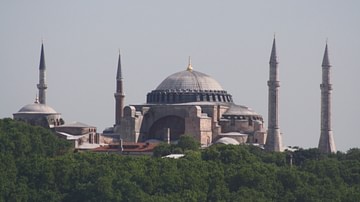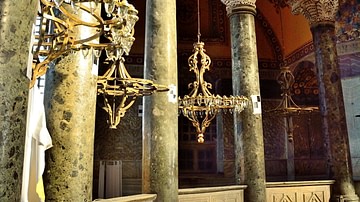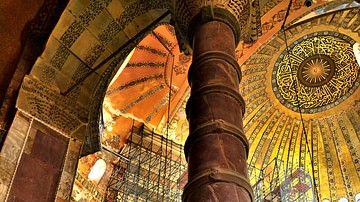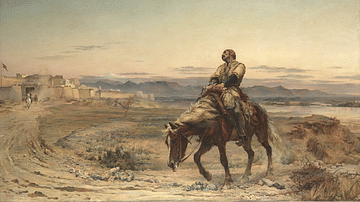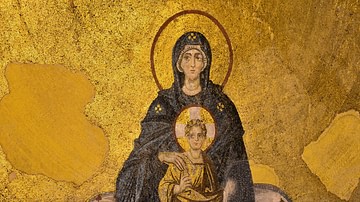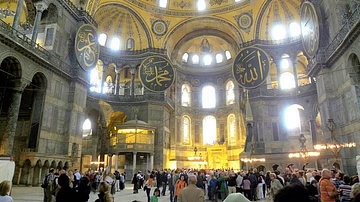Illustration
Remnants of Theodosios' Hagia Sophia. A lamb relief representing 12 apostles. 5th. century CE, Hagia Sophia, Istanbul, Turkey.
The first name of the Church was ‘’Megale Ekklesia’’ which means ‘’the Grand Church’’. The first Hagia Sophia was built in 360 CE. It was a wooden-roofed basilica, built on the site of a pagan temple. Contrary to popular belief, it was donated by Constantinus II not by Justinian. When the church was built, severe conflicts arose between the Pagans and new Christians.
When its roof was burned by a fire in 404 CE and then mostly destroyed in a second fire in 414 CE, Theodosius II, a great believer of orthodoxy dedicated a new church in 415 CE. Among the ruins of Theodosius’ church, you can see the architrave of 12 sheep that represent the twelve apostles of Christ in front of the monumental entrance.
Cite This Work
APA Style
Team, H. S. R. (2018, January 24). Remnants of Theodosius' Hagia Sophia. World History Encyclopedia. Retrieved from https://www.worldhistory.org/image/7974/remnants-of-theodosius-hagia-sophia/
Chicago Style
Team, Hagia Sophia Research. "Remnants of Theodosius' Hagia Sophia." World History Encyclopedia. Last modified January 24, 2018. https://www.worldhistory.org/image/7974/remnants-of-theodosius-hagia-sophia/.
MLA Style
Team, Hagia Sophia Research. "Remnants of Theodosius' Hagia Sophia." World History Encyclopedia. World History Encyclopedia, 24 Jan 2018, https://www.worldhistory.org/image/7974/remnants-of-theodosius-hagia-sophia/. Web. 08 May 2025.

